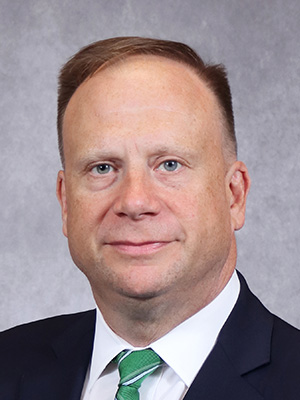Preparing our prospects
by Mark Largent, vice provost and dean, Undergraduate Education
 I have been spending time lately thinking about how students choose the college or university they will attend. The first – and most personal – way in which I have thought about this is through the experience of my high school senior. She is the first of our four children to go through the college-choosing process, and seeing how complicated and fraught with emotions it is gave me a great deal more empathy for our students and their families.
I have been spending time lately thinking about how students choose the college or university they will attend. The first – and most personal – way in which I have thought about this is through the experience of my high school senior. She is the first of our four children to go through the college-choosing process, and seeing how complicated and fraught with emotions it is gave me a great deal more empathy for our students and their families.
While my student has been making her college choice, I have been working closely with the Office of Admissions at Admitted Student Days. Throughout spring semester, the Office of Admissions hosts seven events every week to welcome admitted (but generally not yet deposited) students to campus for a tour. These yield events are incredibly important in MSU’s efforts to recruit a diverse and sufficiently large class of incoming students.
Many people are surprised to learn that, on average, students apply to between six and ten colleges. The increasing use of the Common App, rising competition among institutions for a shrinking number of high school graduates, and the increasing accessibility of online information has radically changed the process of applying to and choosing a college. Most students are accepted to several different colleges or universities, so institutions must focus on both increasing the number of applications they receive each year and actively recruiting admitted students to choose their institution over others. While the public focuses on the number of students that an institution admits, the yield rate (what percentage of admitted students choose your institution) is increasingly important. Most institutions’ acceptance rates are well above 50% and their yield rates are below 20%.
This year, the Office of Undergraduate Education has teamed up with Admissions to introduce admitted students to academic life at MSU at these yield events. About half-dozen different Undergrad Ed leaders have developed their explanation of MSU’s academic life, and our goal has been to help admitted students make this very important decision and arrive on campus with a better understanding of what they should be prepared to do to be successful. We do this by helping align admitted students’ expectations with the reality they will encounter if they choose to come to MSU this fall.
My presentation to students has focused on two themes: how the university is structured and what best predicts whether a student who comes to MSU will persist and graduate. I first discuss the structure of the university to provide them a basis for the institutional navigation skills they will have to develop to be successful at MSU. I have learned – as both a university leader and the parent of a prospective student – that colleges and universities assume their students understand a great deal more than they do about the structure and functions of their institutions. A short discussion about the nested nature of majors into departments in colleges at the university is the basis for me to talk about how MSU provides students the room and support to explore their purposes and their passions.
It is normal, I tell the admitted students and their families, for a successful Spartan to change their major at least once. Seventy-two percent of those who graduate from MSU will have changed their major at least once, and about half of them changed their majors two or more times. On average, as long as a student does not change their major after the start of their junior year, at MSU there is no increased time to degree or cost of degree. This, I explain, allows students at MSU to explore their purposes and their passions during the first two years with lower risk than they might experience at other institutions.
I spend the second half of my presentation discussing with prospective students and their families what we know best predicts a student’s likelihood of persisting and graduating from MSU. Their tests scores and high school GPA, their race, sex, and family’s socio-economic status are not strong predictors of their success at MSU. In fact, adding up the more than two dozen things we know about each applicant from the application process predicts only about a quarter of the difference between students who will leave MSU with a degree and those who will not.
Instead, I explain to prospective students, the best predictor of their ability to persist and graduate from MSU is rooted in two questions: do I feel like I belong at MSU, and do I believe MSU can be a vehicle for me to do what I want to do in life? A sense of belonging and a belief that MSU serves a student’s purposes and passions is the best (and perhaps most difficult to measure) metric they should consult in making this important decision. And then I send them out to campus with a charge to see how it feels to them and decide if they think MSU will help them get where they hope to go.
I (gently!) tried to guide my own high school senior toward these same two questions as she made her choice from among four very different schools. This week she submitted her deposit, and I’m excited to watch her learn, thrive, and graduate over the next four years.